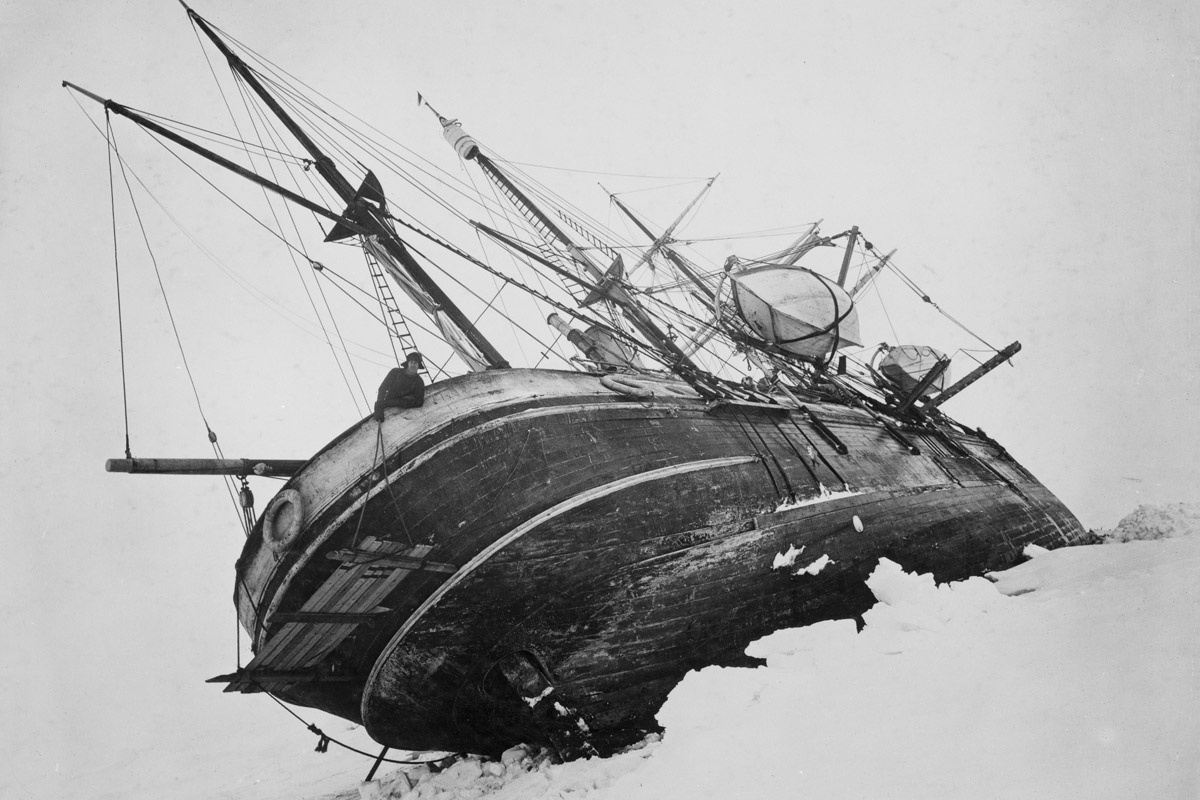On the 5th December 1914, a man and his crew set sail to conquer the last frontier of wilderness. Unfortunately, history’s premier trans-antarctic exhibition, conducted by legendary explorer Ernest Shackleton, was doomed to fail. Just 351 days after its departure from Buenos Aires, the ship ‘Endurance’ ironically slipped below the icy depths of the Weddell Sea never to be seen by human eyes again. But for how much longer?
Shackleton and his crew miraculously escaped the wreck of the ship, which was slowly crushed by sea ice after becoming frozen within fastly frozen ice sheets. The team camped atop solid ice floes for months, hoping to float towards their cached stores on Paulet Island 250 miles away.
Men reinforced their only seaworthy vessels, three vulnerable lifeboats and ate seals, penguins, even their sled dogs to survive. When the ice began to break up around their tents, their last podium of safety was decimated and they were forced to take to the sea. Upon the James Caird, the largest of the lifeboats, Shackleton, five of his best men, and four weeks of rations set sail towards South Georgia 1500 km notheast, leaving the rest of their men behind.
The crew faced 17 stormy days at the mercy of the sea and a 40 km hike over frozen and rugged wilderness. Upon the arrival of the weather beaten and exhausted men, the on-duty manager of the Stromness whaling station couldn’t recognise those he had seen depart 18 months before.
On the 30th August, when sketching his abominable and encompassing surroundings, artist George Marston spotted their ship of salvation amid mist and ice. All 21 men were taken back to the safety of thawed land, leaving their camp and the wreckage of Endurance behind to be swallowed by the icy jaws of the Antarctic.
Agulhas II, 05.24 hours GMT. Ice Pilot Freddie Ligthelm over ship’s intercom:
‘Good Morning from the Bridge. This is to say we have reached the Endurance sinking position. Lekker Lekker Lekker [Afrikaans for “Nice, Nice, Nice”]
104 years after the sinking of the Endurance, the S.A Agulhas II has set sail to uncover the wreckage of Shackleton’s ship, as well as to study the diverse and little-examined marine life in the western Weddell Sea. The vessel is one of the largest and most modern research ships anywhere in the world, able to break through metre thick ice at five knots. She is fitted with a wide range of science laboratories and facilities on board, providing a powerful and effective platform for multi-disciplinary research.
Aerial drones and satellite remote sensing technology will be used to assist the captain of S. A. Agulhas II in finding the easiest channel through the ice and to save it from a similar fate to the Endurance.
The team are also using an autonomous underwater vehicle (AUV) to map the seafloor for anomalies, and the possible wreck of the Endurance. Although, there will be no attempt to retrieve any artefacts from the wreckage, the aim of the expedition is to take images and produce a 3D model of the wreck site.
What secrets will this expedition uncover from one of the most memorable escapes of all time? But more importantly, what can it teach us about the extraordinary array of marine life around the Antarctic region?

